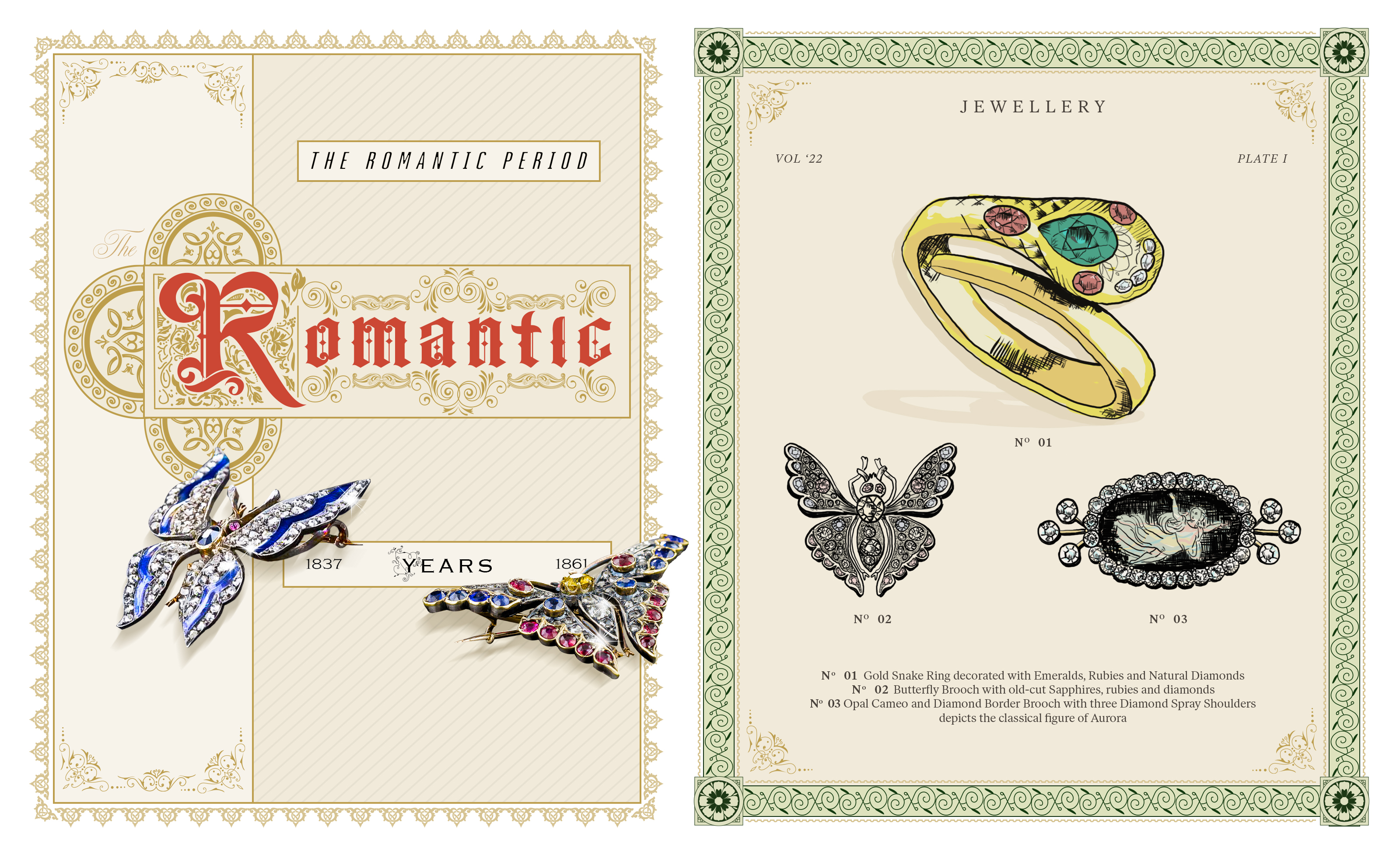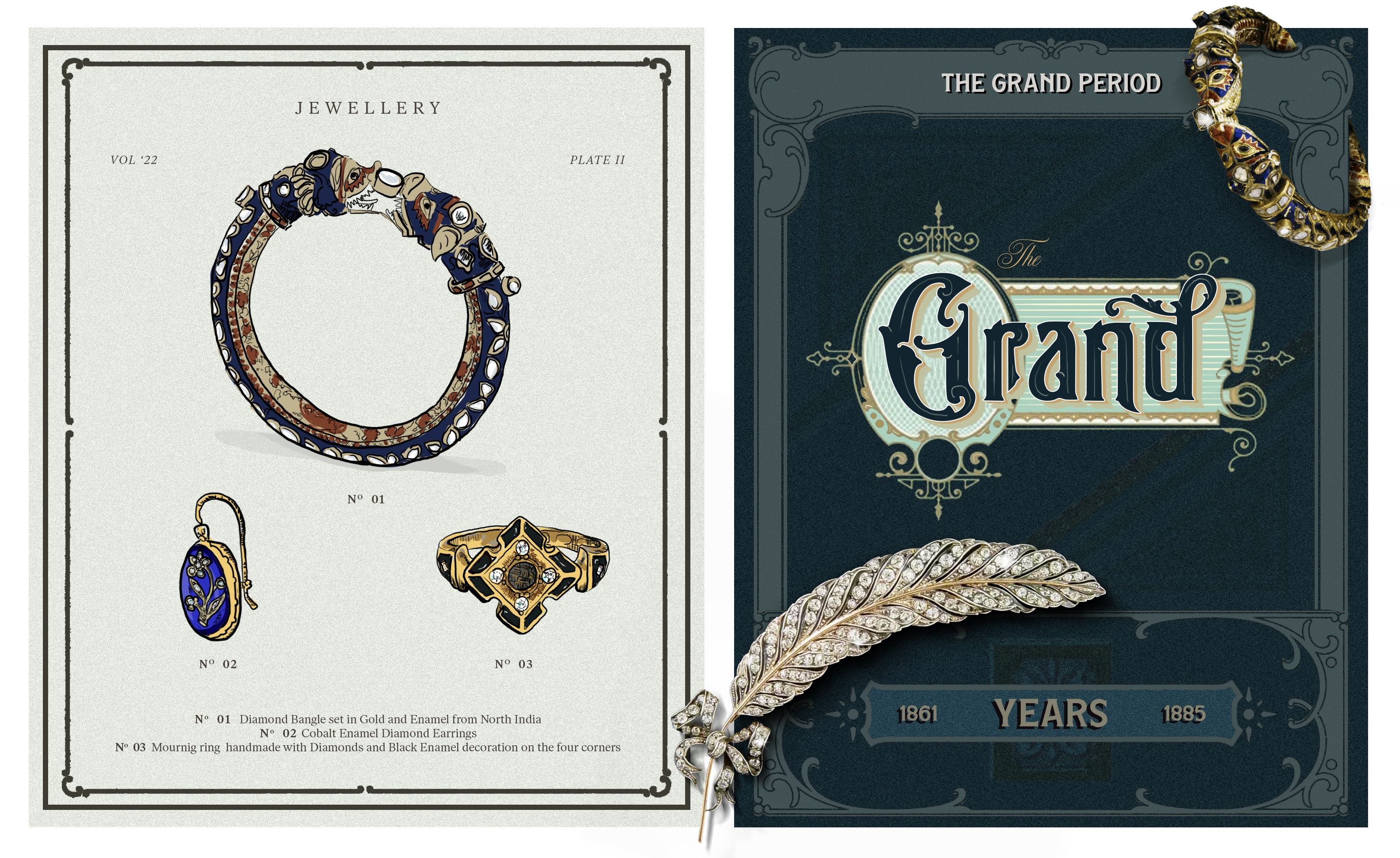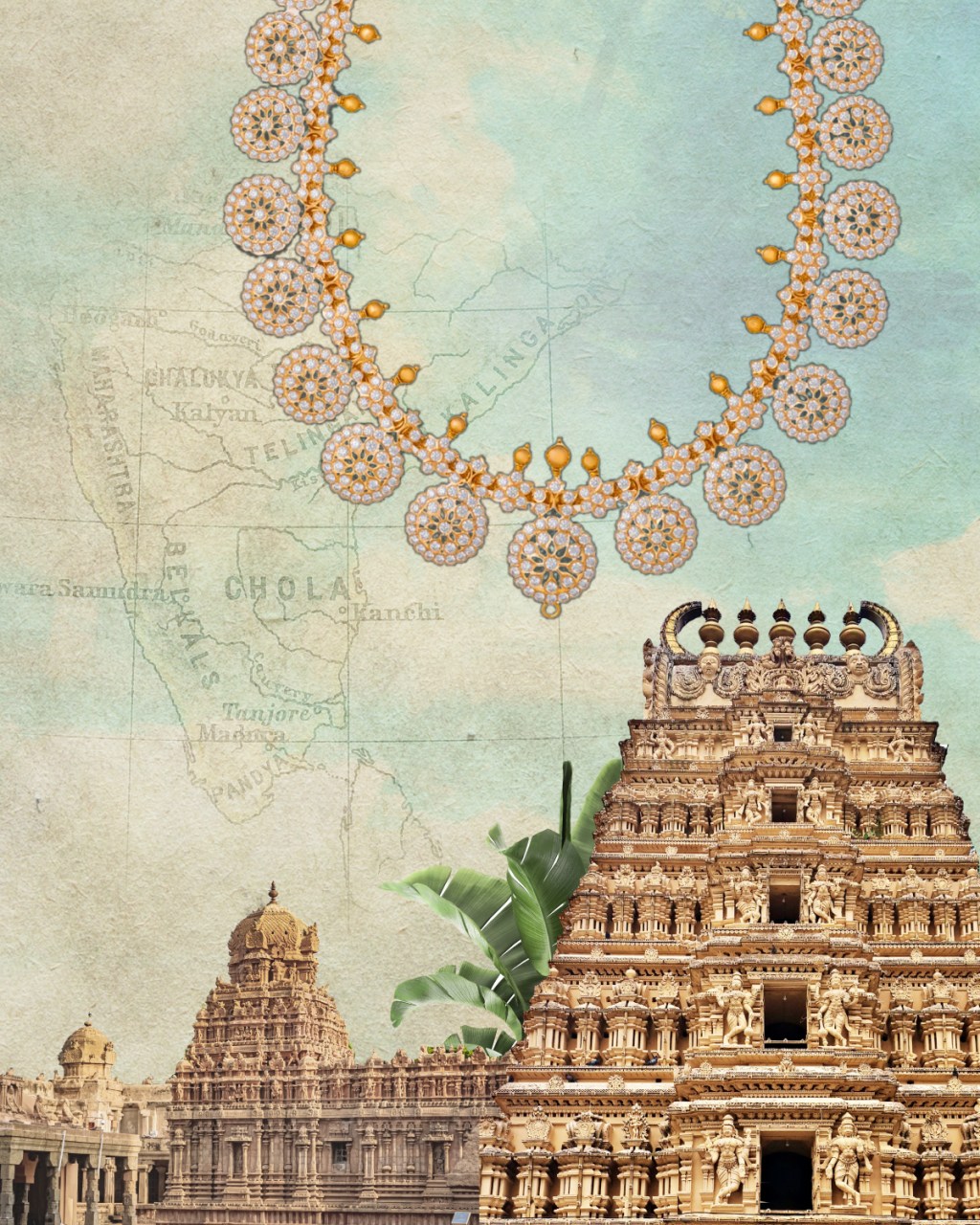Natural Diamonds in the Victorian Era
Read more about the influence of Victorian Jewellery design and its glorious design exchanges with India.

Queen Victoria (b.1819 – d.1901) of Great Britain and the design period named after her, The Victorian Era (1837 – 1901), is as wide-ranging as her empire that stretched from West Africa to India and as iconic as the Queen herself. Heralded by the Industrial Revolution, the period that began with horse-drawn carriages and candlelight marking a time of great innovation, ended with automobiles, electricity and the birth of photography, each development bearing an influence on the designs of the times. By the mid-19th century, India’s rich cultural heritage reflected through its regional arts, crafts and textiles had begun to garner the world’s attention and India as a British colony came to be regarded literally as the ‘jewel’ in The British Crown. This resulted in a prolific exchange of ideas in design, fashion, and jewellery between the two cultures. India was also the sole source of natural diamonds to the world until natural diamonds were discovered first in Brazil in the 1700s followed by South Africa in 1867. By the 1870s major sources of opals were discovered in Australia which together with jade from China and the ability to machine manufacture expanded the repertoire of materials and methods available to jewellery designers all over the world, including Britain, further fuelling their creativity to serve the demands of the cash-rich, middle-class population in Britain. Popular styles of jewellery in this period were also intimately connected with the three stages of Queen Victoria’s life, several of which endure to this day.
The Romantic Period: Embracing Eternal Love and Diamond Trends
Queen Victoria’s courtship and marriage to Prince Albert, the birth of their children and the economic growth of the British Empire in the years between 1837-1860 are generally defined as The Romantic or early Victorian Period. Her engagement gift from Prince Albert was a ring in the shape of a snake, holding its tail in its mouth, a symbol of eternal love. Her birthstone, an emerald that was set in a snake’s head with natural diamonds sparked a trend of engagement rings using the bride’s birthstone. Natural diamonds were also set in flower bouquets, birds, and dragons, popular fairy-tale motifs of the time, all derived from the natural world, while gemstones were attributed with magical properties and special meanings. Pink coral protected the wearer from evil and disease, ruby symbolized passion, and seed pearls depicted tears. Natural diamonds in rose cuts, cabochon, and old mine cuts (resembling modern round brilliant cuts) were set in brooches, bracelets, and cameos along with amethysts, emeralds, onyx, amber, quartz, and ruby serving as status symbols in British society.

Design Exchanges between India and Britain in the Victorian Era
By 1849 Punjab was annexed to the British Empire, bringing jewels studded with fabulous natural diamonds and gemstones from the Lahore Treasury to Queen Victoria via the East India Company. This piqued her interest in Indian jewellery as did the jewels worn by several Indian dignitaries at her court. Since royal tastes and preferences were very influential on public fashion, trends from The Royal Court began to percolate into British society and influence museum collections in England. In 1851, The Great Exhibition was organised at Hyde Park in London, with the intention of improving British design and manufacturing as well as showcasing the best of design from the British Empire. It was the first major exposure of Indian jewellery to the British public and caused a great sensation not only due to the magnificent size of natural diamonds and gemstones but also for the use of coloured enamels and unique designs. Victorian influences also began to show up in Indian jewellery during this period. Influential British design commentators like Charles Lock Eastlake expressed a preference for the harmonious colouring and use of ornamentation on enamelled jewellery from Rajasthan set with natural diamonds. However, the royal blue that showed up in Indian enamelled jewellery was a popular trend in Victorian England which otherwise featured reds, whites, and greens.
The Grand Period: Victorian Mourning Jewellery with Natural Diamonds
1861 marked the passing of Queen Victoria’s mother, followed by the death of Prince Albert which led her into mourning for over a year in an entirely black wardrobe and jewellery. This inspired the use of mourning jewellery and marked the beginning of the Grand or mid-Victorian period (1861 – 1885). Hair jewellery also came into vogue as a way of materialising the mourning process as hair was interwoven into bracelets, brooches, necklaces, earrings, and lockets made of jet and onyx decorated with gold, natural diamonds, garnets, amethysts, silver jet, ivory, pearls, and enamels. Common motifs were skeletons, coffins, angels, crossbones, butterflies, dragonflies, and beetles.

Bottom left: Diamond feather brooch: Lang Antiques and Estate Jewellery, San Francisco
The Aesthetic Period: Victorian Natural Diamonds Jewellery Evolution
The period between 1886 and 1901 is known as the late-Victorian or Aesthetic Period and was characterised by jewellery styles worn by Queen Victoria’s children and influenced by the Suffragette Movement in England that witnessed women becoming increasingly involved in business, politics and pursuing sports such as cycling leading to dramatic wardrobe changes. As clothing became lighter and more functional so did jewellery. Brooches, solitaire rings and stud earrings became popular, as the last Victorian hairstyles exposed the ears and the use of bracelets almost disappeared. Butterfly and roses motifs set with natural diamonds, amethysts, emeralds, and opals became the rage.

However, by the final years of the 19th century, the design reform movement in Britain began to express unease with the formality and uniformity in British design and machine-made jewellery. This redirected their focus instead to hand-crafted jewels that acknowledged the skill of the craftsman. Not surprisingly, the slight irregularity of form in Indian jewellery (the proof of its handmade character) was highly appreciated in Britain, especially the quality of the natural diamond and gemstone setting and cutting (in the Kundan technique). This technique highlighted the natural beauty of the stones in contrast to the European practice of highly faceted stones that were intended to maximise their sparkle. Susan Stronge, senior curator in the Victoria and Albert Museum’s Asian department suggests that “The influence of India [on European jewellery] is much more significant than the influence of Europe on Indian jewellery because it changes forms and the colours change…….it’s a dramatic shift in taste.”
From the romanticism and mystique of the early Victorian period to the darker, more sombre tones of the mid-Victorian period and finally the practical, functional aesthetic of the late Victorian period, the transformation of jewellery through the Victorian era was a result of the dynamic changes of the times. Shaped by royal tastes, economic growth, technological advances and Asian influences, the most enchanting aspect of Victorian jewellery is the deep symbolism and sentimentality rendered in its designs. The other enduring legacy in Victorian jewellery comes from Britain’s colonial engagement with India which resulted in the “dramatic shift in taste” in jewellery in Britain towards the end of the 19th century. Above all, the true testament to the universal appeal of Victorian jewellery is its continued popularity in modern times.
